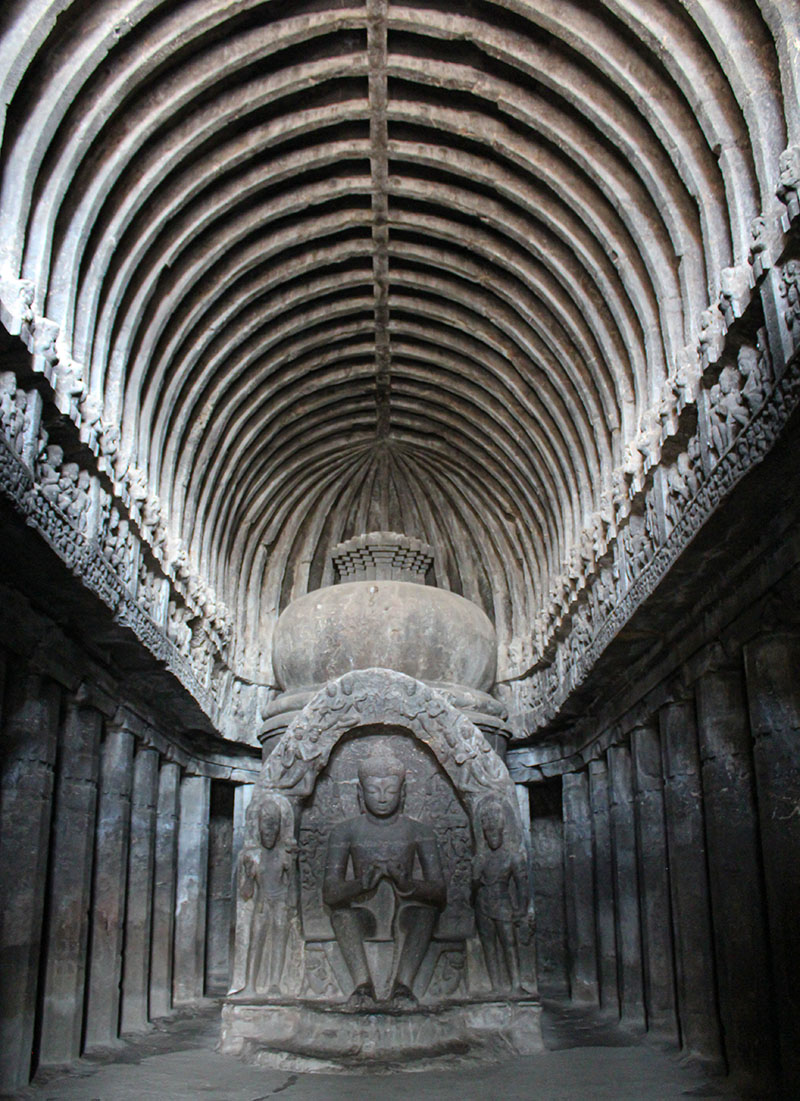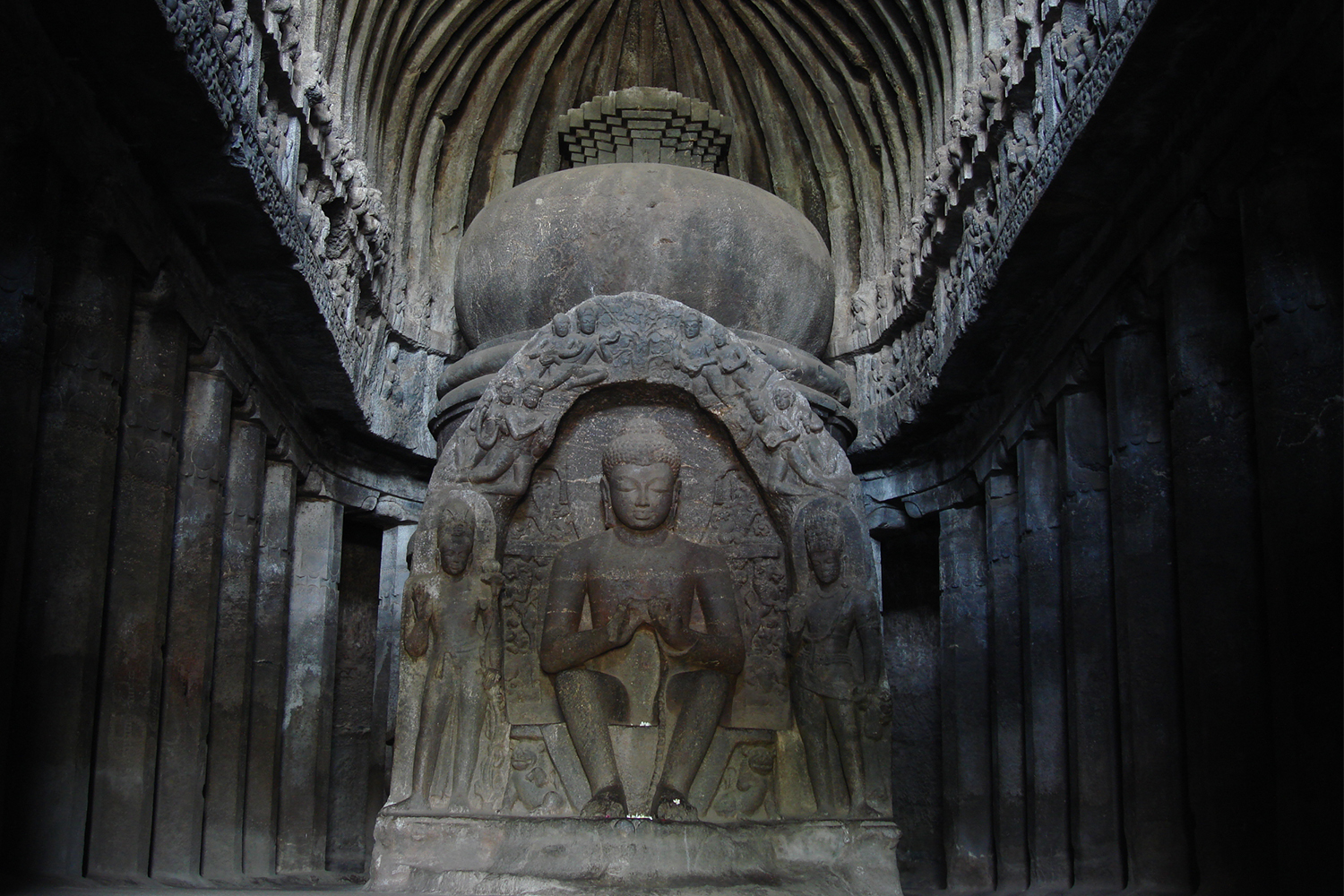ARTICLE
Seated Buddha, Vishvakarma Cave, Ellora
Named after the divine architect of gods, the Vishvakarma Cave was carved in the Kalachuri idiom of architecture. It is the only chaitya hall amongst the Buddhist caves at Ellora and imitates wood-based architecture, especially through its ribbed, barrel-vaulted ceiling which resembles wooden beams. Visitors can approach the sculpture through the central nave which is lined by twenty eight octagonal pillars on the sides. The pillars have plain capitals and a frieze featuring ganas above them. The stupa, behind the Buddha, is positioned at the centre of the nave and extends to cover almost the entire height of the main hall.
Bibliography
“ASI Discovers Two 1200-Year-Old Miniature Stupas At Nalanda.” Outlook. January 12, 2023. Accessed January 13, 2023. https://www.outlookindia.com/national/asi-discovers-two-1200-year-old-miniature-stupas-at-nalanda-news-253066.
“Interior Sootar [Visvakarma] cave [Ellora].” British Library. Accessed January 13, 2023. https://www.bl.uk/onlinegallery/onlineex/apac/photocoll/i/019pho000430s35u00008000.html.
Owen, Lisa N. “The multireligious caves at Ellora.” Smarthistory. July 29, 2021. Accessed January 16, 2023, https://smarthistory.org/the-multireligious-caves-at-ellora/.
Poduval, Jayaram. “The Architecture of Ellora Caves.” Sahapedia. November 12, 2018. Accessed January 13, 2023. https://www.sahapedia.org/the-architecture-of-ellora-caves
“Vignettes of Ajanta & Ellora: Where time and place stand still.” Google Arts & Culture. Accessed January 13, 2023. https://artsandculture.google.com/story/vignettes-of-ajanta-ellora-archaeological-survey-of-india/HQVhGmGkIycnKA?hl=en










